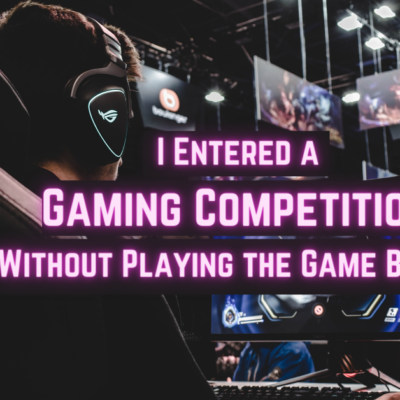

As promised, here’s part 3 of how to start your own website and blog! We’re currently at month 3, preparing for our launch.
This multi-part series is where I walk you through my experiences of growing a website/blog. Rarefyi is a place where people can help others by sharing their experiences, so submit your story to us if you wish!
Part 3 is a little bit special. I’ll show you my purchases; Mainly domain name, web hosting, and a premium WordPress theme. You’ll get to find out exactly how much I spent to start my website/blog.
Hopefully, this article will answer the question of “How much do I need to start a website or blog?” once and for all.
Start reading our journey from Part 1 or skip ahead to Part 2 where we created our brand identity.
I’ll keep this series going so be sure to follow us on our social media platforms for updates!
Jump ahead to
How Much to Buy Your Domain and Hosting
Image: My Hostinger invoice (I blacked out the Receipt ID)
The bulk of your expenses will go towards domain and hosting. It could even be 100% of how much you need to start a website/blog!
As mentioned in Starting a Website Journey Series Part 2, you need to buy both a domain name and web hosting to set up a website.
That’s why I’m going to show you how much I spent on domain and hosting for my website to appear on the Internet.
Before deciding on a suitable web hosting provider, I did much research and compared the prices and features of different hosting plans from different companies.
I narrowed down my choices to Hostinger, Bluehost, Hostgator and Siteground. I ultimately went for Hostinger.
Since I’m just starting out and didn’t have much money as a student, Hostinger was the most economical and obvious solution. The services they provide at an affordable price is what influenced my decision.
I’ve always been a value-for-money kind of guy!
I bought my hosting for 4 years (maximum plan they provided) because I know I’m going to keep Rarefyi running long term and it’ll save me some money at the same time.
I spent a total of USD $172.32 on the Business Shared Hosting package. That works out to an estimated $3.59 USD a month. The “actual” price without all the discounts is USD $794.36.
Image: Hostinger Hosting Plan Renewal Price
After my initial 4 years of web hosting, the renewal price will increase. Although the price increases more than 2 times, it’s still considered reasonable compared to other web hosting providers.
The Business Shared Hosting package I bought included:
- Free Business Email
- Complimentary SSL Certificate
- Free Domain Name (for 1 year)
- Capacity of ~100,000 monthly visits
- …and more!
I chose the Business Shared Hosting package because I didn’t want to pay more to upgrade my plan in the future if needed.
SSL Certificate Is More Important Than It Seems
Image: Rarefyi’s SSL Certificate displaying secure connection
Nowadays, it’s considered a norm for websites to have SSL Certificates. Secure Sockets Layer (SSL) provides another layer of protection for personal data.
Image: Website without SSL Certificate
In my opinion, an SSL Certificate is an absolute necessity when you’re starting a website and trying to attract an audience.
Will you trust a website if you see a “not secure” warning?
I have used Hostinger for months and have not faced any issues thus far. They have a rather intuitive User Interface to navigate through. Overall, I recommend Hostinger to those who are looking for a hosting provider that provides good value.
Why I Didn’t Go For Free Hosting Websites (E.g. Blogger, WordPress.com)
The short answer is, I wanted to have my personal domain name. Furthermore, I treated Rarefyi as my passion project and paying for hosting gives me added motivation to post consistently.
Alternatively, If you just want to write and publish whenever you want, and do not want to pay for a website, you may use websites such as WordPress.com to host your blog.
However, your domain name won’t be yours. It’ll look something like “https://yourwebsite.wordpress.com” and irrelevant ads may be placed on your website (you won’t be paid for it).
Do what works for you!
Don’t be confused by WordPress.com and WordPress.org. WordPress.com is the free version while WordPress.org requires an external hosting provider (such as BlueHost and Hostinger) to be activated.
How Much to Buy Your WordPress Theme
Image: Rarefyi’s WordPress Interface
Once you’re done buying your domain and hosting, you need a website builder of sorts. I use WordPress to create and manage my website’s content.
There’s a little bit of a learning curve, but once you get the hang of it, it comes naturally.
Hostinger has an easy Auto Installer for WordPress. You may access it when you’ve completed your hosting purchase. There is no added cost for WordPress.
Although I spent money to purchase a premium WordPress theme, you don’t have to buy a premium theme. There are plenty of free ones for you to choose from.
The reason I bought a premium WordPress theme is because I found the design and feel of the theme to suit my brand. I paid USD $31.20 for it.
I use my YouTrip card to buy hosting and other foreign currency purchases. Doing so gives me more bang for my buck because YouTrip uses wholesale exchange rates and has no transaction fees.
I suggest all small business owners consider using YouTrip. It just makes financial sense. You may use my referral code if you are interested in setting up an account with YouTrip. You’ll receive a referral cash bonus and I’ll receive a small kickback if you use my code. It’ll go towards building Rarefyi and helping more people learn from experiences.
Now, writing this article months after my launch, I realised that I should have analysed my theme options more carefully before buying.
Although the theme I bought was nicely designed, there were some issues such as wrong colour displaying, certain content not being able to fit to screen, etc.
I emailed the support team but they could only help so much (they were friendly though). I had to learn coding myself the hard way to fix outstanding issues.
If I could redo everything, I would buy a theme that prioritises page speed. Back then, I did not know that page speed is one of Google’s ranking factors.
You may run your theme through Google’s PageSpeed Insights to understand how fast your website loads before committing to a theme.
Adding CSS Codes
Never edit your theme’s code directly if you don’t know what you’re doing. You could easily break your whole website.
Instead, if you have any changes, you may add CSS codes to the Additional CSS section of the customisation page. It won’t break your website as you can remove the codes if anything goes wrong.
CSS is “style” coding. Think coding the visuals and aesthetics of your website. For example, if you want more spacing between texts (and your theme doesn’t allow you to readily adjust it), you may add your own codes.
It took me very long but I’m proud to say that I understand a little bit of coding now. I used to hate coding and would avoid it.
Creating Rarefyi forced me to be exposed to coding, and I feel a sense of achievement when I observe the codes that I wrote working right.
You won’t need to do all these if you get the right theme though!
Verify Website on Google Search Console + Google Analytics
I remember during my internship, we used Google Search Console to index URLs and track traffic.
How to verify my website on Google Search Console?
I asked myself this question too when searching for website best practices. This was the video I watched to learn and set up Google Search Console for my website.
Afterwards, I proceeded to create my Google Analytics account. Google Search Console and Google Analytics are the basic tools you need to track your website traffic and gain insights on who’s your audience.
They are both important if you’re looking to grow your website!
These may interest you:
- My Experiences of Starting a Website/Blog (Journey) Part 1
- Finding Your Brand Identity – Blog/Website Journey Part 2
- 7 Ways You Can Build Your Portfolio in School
- Keeping Up With Your Ever-changing Passion
- How to Win a Writing Competition – From a NYT Competition Winner
Conclusion – How Much Do I Need to Start a Website/Blog?
How much I spent to start my website/blog?
In case you weren’t paying attention, I spent USD $172.32 on a 4-year hosting package and USD $31.20 on a premium WordPress Theme.
I hope that you understand what it takes to start a website or blog after reading this article. All this information may be daunting, but from my experience, you should start now and leave no regrets.
Starting a website can cost anywhere from $0 to thousands of dollars. For a beginner who is looking to create their website with a personalised domain, it’ll probably only cost a few dollars a month.
So, should you even buy domain and hosting?
It depends on what you’re looking for! If you don’t care about your domain name and want to try writing a few articles for fun, you possibly don’t need to buy domain and hosting.
On the other hand, if you are looking to write consistently long term, you should consider spending a few dollars a month to build your brand.
Want to get your feet wet and start your writing journey? You may write an article and publish it on Rarefyi!
This month, I also created a Telegram Channel for people to be quickly notified when a new experience, guide, or happening comes out. Do join our Telegram channel and be a part of our growth!
Let me know if you have any content suggestions!
We’d LOVE to Feature You!
Your experiences are highly valued by others.
You Deserve to Make Better Decisions.
Receive summaries of experiences & guides, from those who’ve been there, done that.
If you like our content, we’d appreciate it if you could follow us on our social platforms!
It’ll bring us one step closer to equipping everyone with knowledge to make better decisions.
About the Author
Jonas Ngoh loves to give advice based on his experiences. Feel free to talk to him!









